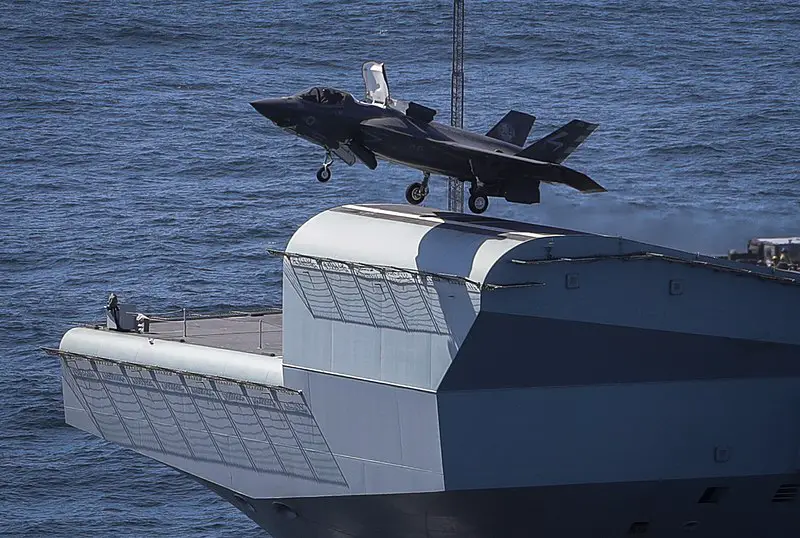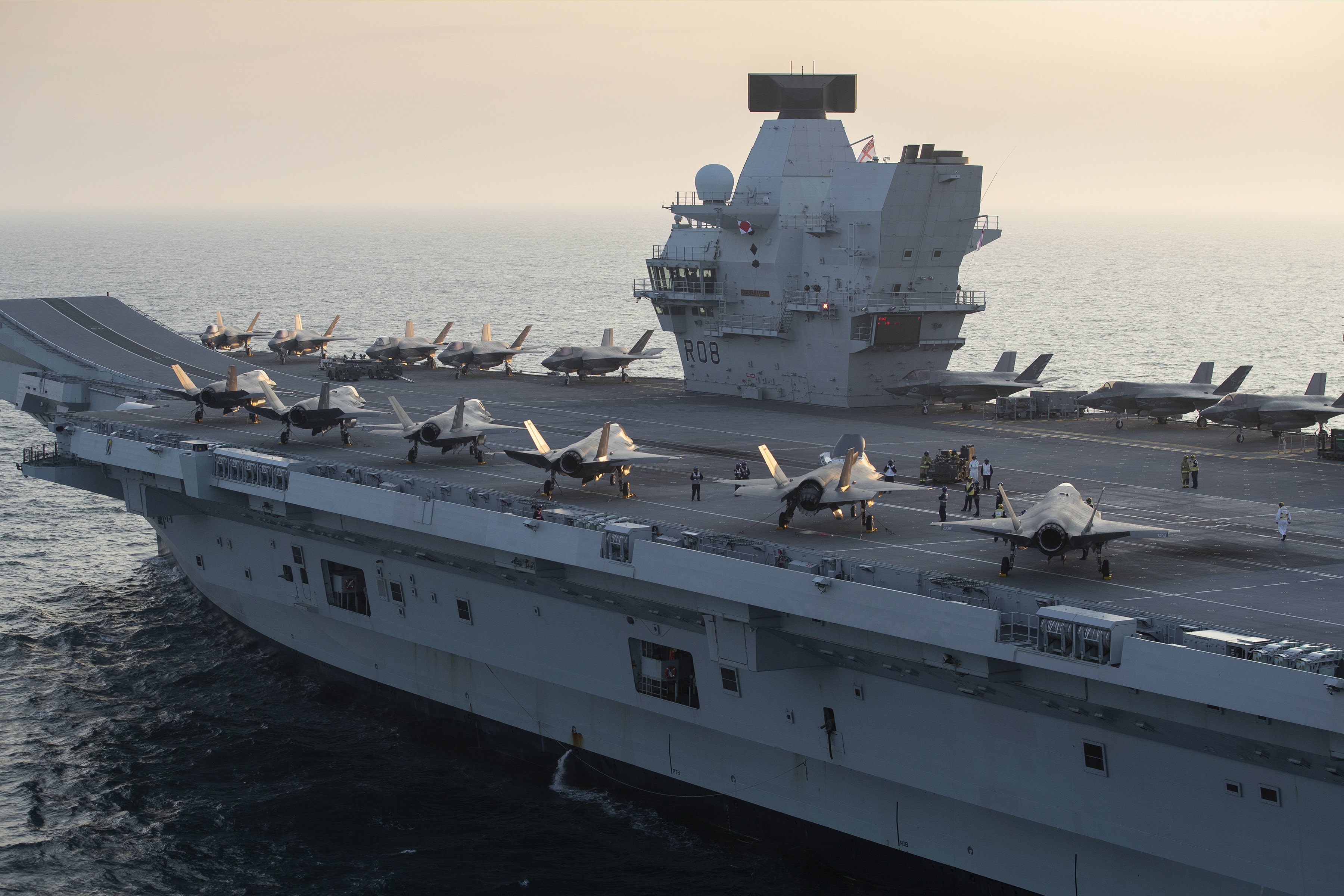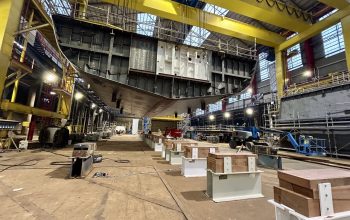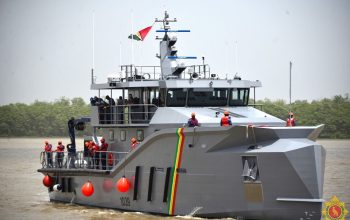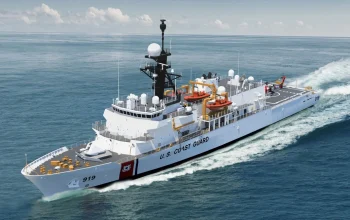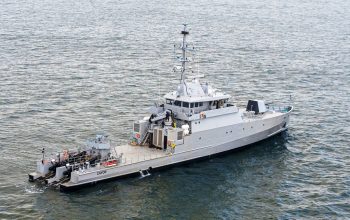The U.K. Ministry of Defense announced that an F-35B Lightning II Joint Strike Fighter operating from U.K. carrier HMS Queen Elizabeth (R08) crashed in the Mediterranean on Wednesday. Queen Elizabeth deployed with a blended air wing that includes the “Wake Island Avengers” of U.S. Marine Fighter Attack Squadron (VMFA) 211 and the Royal Air Force’s 617 Squadron “The Dambusters.” The carrier strike group is on its final leg of its inaugural deployment after departing the U.K. for its deployment on May 22 with eight RAF F-35Bs and 10 Marine F-35Bs. Alongside eight Merlin helicopters, it is the largest air group to operate from a Royal Navy carrier in more than thirty years, and the largest air group of fifth generation fighters at sea anywhere in the world.
A British F35 pilot from HMS Queen Elizabeth ejected during routine flying operations in the Mediterranean this morning.
The pilot has been safely returned to the ship and an investigation has begun, so it would be inappropriate to comment further at this time.
— Ministry of Defence Press Office (@DefenceHQPress) November 17, 2021
The United Kingdom’s Royal Air Force and Royal Navy both operate the F-35B, known simply as the Lightning in British service; it has replaced the Harrier GR9, which was retired in 2010, and Tornado GR4, which was retired in 2019. The F-35 is to be Britain’s primary strike aircraft for the next three decades. One of the Royal Navy’s requirements for the F-35B was a Shipborne Rolling and Vertical Landing (SRVL) mode to increase maximum landing weight by using wing lift during landing. In July 2013, No. 617 (The Dambusters) Squadron would be the RAF’s first operational F-35 squadron. The second operational squadron will be the Fleet Air Arm’s 809 Naval Air Squadron which will stand up in April 2023 or later.
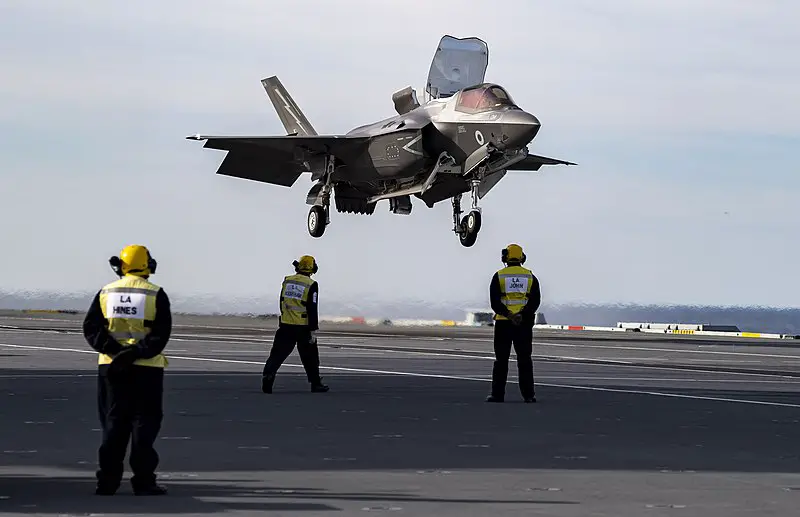
The Joint Combat Aircraft (JCA) is the official designation of the United Kingdom Ministry of Defence used for the F-35 Lightning II. The F-35, formerly the Joint Strike Fighter, is the result of the Joint Strike Fighter programme. JCA has been closely aligned with the “Future Carrier” (CVF) programme due to the interdependencies between the two; the latter developed into the Queen Elizabeth class. Both the F-35s and the carriers are the main elements of “Carrier Strike”, the term for an initial capability for both elements along with the Merlin Crowsnest airborne radar system. The next steps is the introduction of the second carrier and a second squadron of F-35Bs to allow the carriers to operate the full range of intended roles; this capability, “Carrier Enabled Power Projection” is expected in 2026.
The Lockheed Martin F-35 Lightning II is an American family of single-seat, single-engine, all-weather stealth multirole combat aircraft that is intended to perform both air superiority and strike missions. The F-35 was designed with three initial variants – the F-35A, a CTOL land-based version; the F-35B, a STOVL version capable of use either on land or on aircraft carriers; and the F-35C, a CATOBAR carrier-based version. The F-35B is the short takeoff and vertical landing (STOVL) variant of the aircraft. Similar in size to the A variant, the B sacrifices about a third of the A variant’s fuel volume to accommodate the SDLF.[308][309] This variant is limited to 7 g. Unlike other variants, the F-35B has no landing hook. The “STOVL/HOOK” control instead engages conversion between normal and vertical flight. The F-35B can also perform vertical and/or short take-off and landing (V/STOL).
